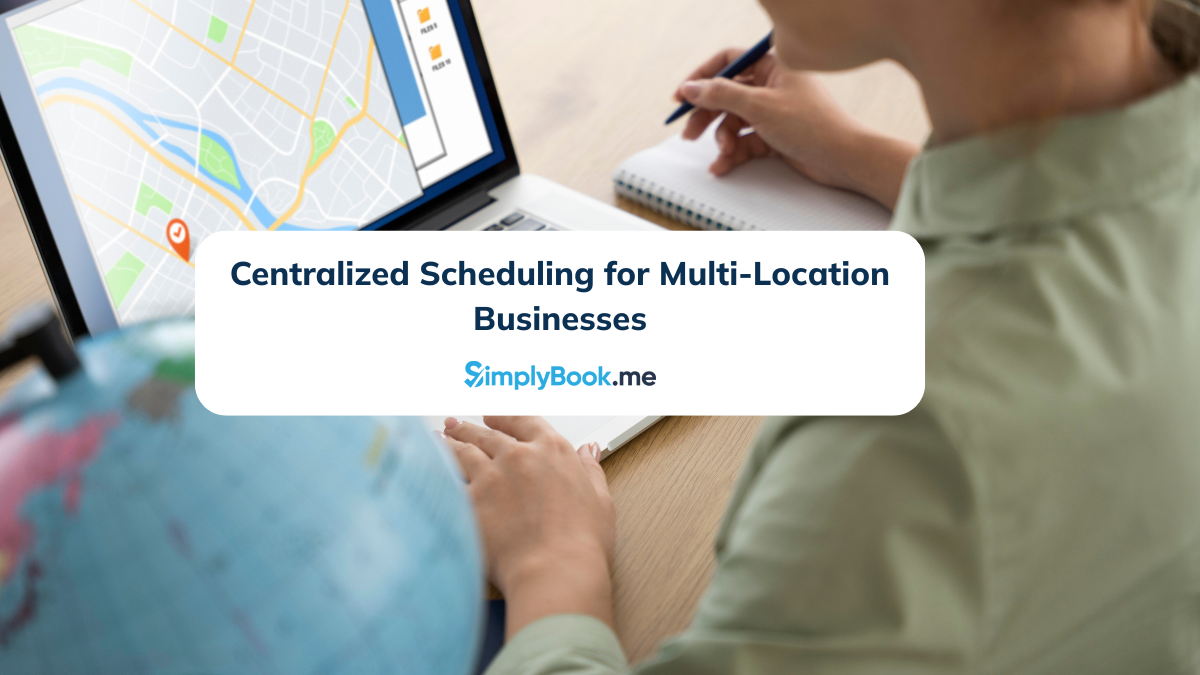Reopening Your Service Business and Dealing with Increased Demand

This post is also available in:
![]()
![]()
![]()
Okay, it’s 2021, vaccines are rolling out throughout the globe, and there is a light at the end of a year-long tunnel signalling the time for life to return to normal. That means reopening of service businesses and dealing with increased demand from people deprived for far too long. But how are you going to do it? For many small and medium-sized companies, it’s not a simple case of opening doors and welcoming all the old clients back. There are some complicated logistics involved. What worked before might not work again, and you will have to decide how your business will recover after the past year (or more) of uncertainty and fear.
Proper Planning for a Proper Reopening
Let’s be honest, we’ve all been preparing for a proper reopening since April 2020, but despite the best intentions and hopes, many businesses are still waiting for a return to full capacity. It’s has been a state of maybe/maybe not for the past eight long months, opening and reclosing with no guarantee of a definite end in sight.
This time it will be different! This time there is a plan in place to take everyone out of lockdowns and forced closures. No government wants to keep going through the same cycle, and people will not tolerate it again. However, we do need to accept that there is no going back. We can achieve something very close to what we used to call “normal”, but we can’t go back; too much has changed, and some of it for the better.
A Three-Step Process For Reopening and Recovery
It’s not simple to suddenly say, “Hey, we’re open again,” and assume that everything about your business will suddenly slot back into pre-COVID normality. It will never happen. Even if you are one of the firms that managed to stay open and retain staff and revenues, nothing will move backwards. All of the new measures you have put in place, for when you could open, and the adjustments you made when forced to close your premises, will impact how you work when everything manages to reopen again.
Review – Restart – Recover
Reviewing means looking at how your business stands right now and how it will fit the new landscape. Restarting is your step back into “normal operational processes. And recovering is how you will take your business back up to where you want it to be.
Review – It’s like writing your business plan all over again
Before you began your business, you researched customer behaviour, requirements, demands, and target market saturation. After such a drastic shift, as caused by a global pandemic, you need to do it again. Throughout lockdown and restricted reopening, you have had time to reflect on how the business environment has changed. There are a few key areas you need to evaluate before you put together your reopening plan.
Customers
Customers are an essential aspect of your business reopening; without customers, there is no business. You will need to evaluate what changes have occurred, both in the way your company operates and your customers’ behaviour. You will need to ask yourself, clients, and staff a few critical questions to determine the path forward.
- Who are your target clients? Are they the same, or have they changed significantly?
- How well do you know your clients? Have you kept up to date with their changing needs and wants?
- Are you aware of the impact on your clients, and are they aware of the effect on your business?
- How do these changes affect how you reorganise your business model to reopen after the pandemic is over (and everyone is vaccinated)?
- Are you proactively in contact with your client list? And is your client up-to-date and cleaned up?
Business Structure
Business structure is things like your workforce and the responsibilities of each staff member. It is also the different working methods you have implemented to either keep your business running or what you have had to do to maintain a company to come back to, such as digitalisation or remote working structures.
- What change have you made to your workforce?
- Have you managed to digitise some, if not all, of your business effectively? If so, will you maintain a digital service when you can reopen your premises or perhaps even offer a hybrid service?
- Are your digital security policies in order, or do they need revising?
- If you have managed to digitise some of your business, will you still accommodate remote workers? If so, how will you handle a distributed workforce?
- Do you need to hire (or rehire) staff because of lay-offs?
- Have you identified skills gaps or hidden talents, and can you use them in the new order of things?
Business Processes
What does your business require to function? Processes include things like maintaining cash flow and resource suppliers.
- What is the current financial health of your business? Do you have sufficient liquidity to reopen effectively?
- How will this change between now and reopening – hopefully in about 3-6 months?
- If you are eligible for government support, how will your finances stand up when it ends? Will you be able to maintain the business?
- Do you have a credit line available for supplies?
- How are your old suppliers doing? What do you know about their supply line, financial stability?
- Do you need to change suppliers?
Restart – Reopening Back to Normal Business
When you reopen, you want your clients to be happy with the way you operate, your staff need to be happy with the “new” organisational structure, and your bottom line needs to be happy with your cash flow. If you have thoroughly reviewed your business before you reopen, you should be partway there, but there are some things you can’t evaluate preemptively.
Customers
Once again, they are at the forefront of your business model. and your primary objective is to keep them as happy with your business as they were before the shutdown happened. How are you doing that, and can you do it better?
- How are you communicating with your clients?
- Can you share critical information quickly?
- IF you offer a blended digital service, is the quality the same across channels?
- Can you identify new opportunities with new clients in the new landscape?
Business Structure
How is your revised staffing structure holding up to the new situation? Be ready to reevaluate is your initial predictions were a little off. It’s easy to say, “People are desperate to come back and…” However, you also need to consider that there may be a significant number of people who don’t immediately rush out and do everything they’ve not been able to do.
- How are you managing working conditions, shifts and health and safety for employees?
- How are you supporting the return to work in terms of physical and mental health (this year has taken its toll on many)?
- What is working and what isn’t as you navigate the new working structure?
- How are you supporting a hybridised workforce? What tools and resource do you or your managers need?
- Do you have any remaining security concerns?
- Do you and your workforce have the appropriate equipment and resources to do their jobs?
- Is your current staffing level adequate to accommodate increased demand, or are you overstaffed due to overestimating client uptake?
Business Processes
You should have already ascertained how much much liquidity you have and how much revenue you need to function before reopening. It’s also pretty crucial that you sourced any required supplies before opening.
- How can you get your cash flow up as quickly as possible? How can you optimise service provision and revenues?
- Can you adjust your pricing structure without losing clients?
- What can you do to maximise your most profitable services?
- Do you have sufficient inventory? Have you secured a supplier for future resource needs? Can they keep up with your demands?
- Will you need to make changes to suppliers due to the changing working environment or capitalising on new customer request?
Recovery – Regaining Lost Ground and Coming Back Stronger
If you’re here, then that means you made it. They really should make business bumper stickers for small businesses that survive COVID-19. It’s a fair assumption that some of your fellow business owners have been quite so fortunate – no matter how hard they worked. this is the part where you consolidate on your successes and push forward into revitalised growth.
Customers
Still taking first place in the business model for your recovering business, it’s now time to expand this customer base. You know, as well as anyone, that the effects of COVID-19 pandemic measures caused a massive loss of clients. Not just because they went elsewhere, but because of lingering fear, learning to “do without”, or even adverse economic circumstances – few will emerge from this situation economically unscathed. However, now you have survived, it’s time to try bringing some of those clients “back home” – or at least attract some new ones.
- How is your relationship with your customer base?
- How do you maintain and improve your customer loyalty? And can you turn loyal customers into brand advocates?
- What can you do to improve the client experience and extend your business parameters?
I won’t go into the other aspects of recovery; you’ve been through this process before – it’s just the same as when you first started your business. However, this time you have the experience under your belt to create safeguards and process to protect against any similar future events, at least partially.
Everything you have learned from surviving this awful period of upheaval will make you more prepared for adverse conditions in the future – fingers crossed, there will be nothing as terrible as this.
Dealing with Increased Demand on Reopening
There are two ways that your business reopening could go; it will be either a mad scramble to get your first appointments, or it could be a slow return to a full schedule. The gradual return you can cope with, as long as you have the liquidity available to pay your staff. It’s the mad scramble that will catch you on the hop. Very few people are used to operating at full capacity for an extended period, and after a long break from hectic schedules, not many are ready for client after client.
Since we’re dealing primarily with services here, you do have a bit of an ace up your sleeve in that you can request all your clients make an appointment. You get to dictate the schedule, and you don’t end up with a lot of people crowding your premises. This is particularly important as there will likely still be some health and safety measures in place, even when you do get the green light to reopen.
A few ideas that might make you reopening a resounding success:
- Make it easy to book, pay, and choose in advance.
- Set up a booking system – if you don’t already have one
- Ensure all marketing material in the run-up to your reopening stipulate “Book an Appointment!” and make it easy to find.
- Have a practice run with your returning/new staff.
- Don’t expect people to operate at full capacity straight away. It can take time to build a smooth system between new team members, and you might be dealing with a whole new batch.
- Cross-train your staff so that someone can step in when they need to.
Planning a Smooth Reopening
Don’t let it overwhelm you. It might seem daunting to reevaluate an established business to a new set of “normals”, but you have done this before. You just have to work with different parameters.
However, this time you aren’t starting from scratch. You have your client lists, you have a wealth of marketing data from previous customers, and you already have a business structure you can adapt. There are many sources of information available, but I love the Deloitte (Australia) workbook for reopening small businesses. Some of the data is Australia-specific, but much of the advice is universal and could be a great help.
A few key takeaways are
- Keep communications open and prompt with both clients and staff.
- Prepare yourself, your staff, your accountant and your suppliers, but don’t be afraid to adapt – these are interesting times for everyone, and predictions can be a little off.
- Invest in the tools you and your business need. You can be a success if you don’t have the resources to provide for your clients.
The light at the end of the tunnel is getting near. With the right plan, you could come out the other end ready to go! We are rooting for you!


Comments
1 comments